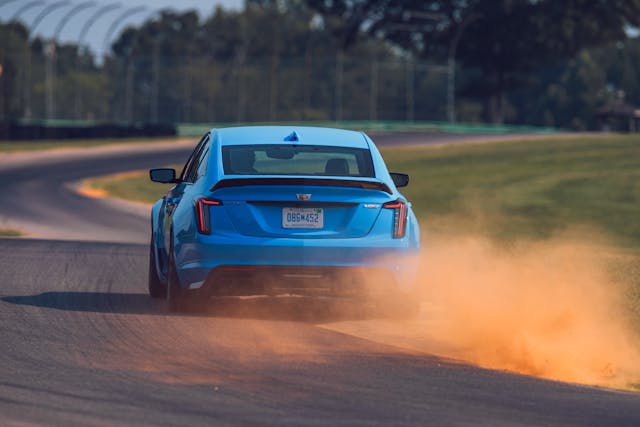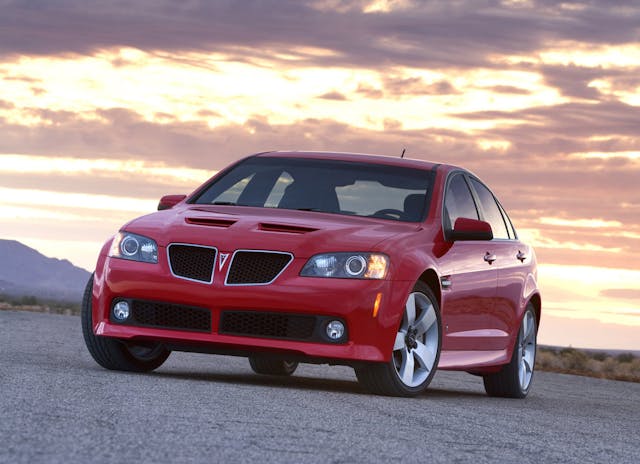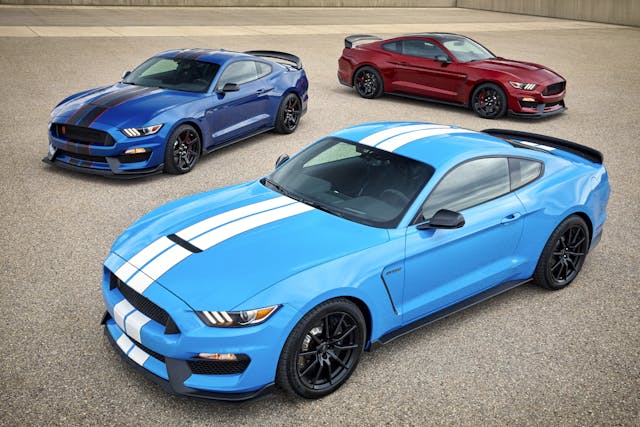Media | Articles
The Second Golden Age of Muscle Is Over, and It Was Better Than the First
The Hemi is dead. The Challenger and the Camaro as we know them are gone for good. Only the seemingly eternal Mustang remains. I think we can call the second golden age of American performance as being officially over, and what comes next is uncertain. It’s time to take stock of an automotive epoch that lasted over three times as long as the original, and produced cars that were arguably much better. In the future, the best of these twenty-first century muscle cars may even be more collectible. Does that sound like heresy? Maybe, but hear me out on this.
The original golden age of American muscle lasted just a decade or so, give or take, depending on what you believe was the first muscle car. It came to a crashing halt around 1974 with the multipronged assault of rising insurance rates, soaring gas prices, fuel shortages, and ever-tightening emission regulations. What followed the muscle car years has been dubbed “The Malaise Era” by journalists. It too lasted about a decade, and it took yet another generation before the next golden age of American performance cars arrived. But this one greater than the first, not just in acceleration and handling numbers but in the diversity and quality of the cars. Here are a few to try on for size:
The last manual V-8 performance sedans


As is so often the case, the apex of an epoch comes just before the end. Just as the T-Rex was around for the explosive end of the dinosaurs, the Cadillac CT5-V Blackwing is here to see out the second golden age of American automotive performance as the industry moves towards electrification and away from driver-focused fun like manual transmissions and high-displacement V-8s. The Cadillac is perhaps the greatest American sedan of the modern era, and given the endangered status of sedans in general, it’s likely to go down as the greatest of all time. With a 668 hp supercharged V-8, polished handling, and an available 6-speed manual (the take-rate for which has been around 50 percent). Not even out of production, the CT5-V Blackwing is already being viewed as semi-collectible. If the history of its GM super sedan predecessors is any indicator, these cars aren’t likely to get any cheaper in the future.


Its predecessors in super sedandom were of course the Chevrolet SS and the Pontiac G8 GXP. Yes, technically these were products of GM Australia’s Holden division, but in execution, powertrain and conception, they were thoroughly American-inspired. For years, American brands had tried and failed to build a credible sport sedan to tackle the Europeans, but with this pair GM finally succeeded in building what was essentially an American take on BMW’s beloved E39 M5, minus the crippling costs of ownership, and also with an available manual transmission. They never seemed to depreciate significantly once they became used cars, and today it takes around $50,000 to secure a manual transmission version of either one. After cars like the CT5-V Blackwing inevitably go extinct, it’s unlikely they’ll get any cheaper.
The most powerful muscle car, ever

This second golden age of American muscle gave birth to something muscle car fans of the 1960s couldn’t conceive of even in their wildest nitromethane fume-fueled fever dreams—The 2023 Dodge Challenger Demon 170.
Marketplace
Buy and sell classics with confidence
Superbird, Schmooperbird, this 1025-hp rolling affront to mundanity had what Dodge billed as “Holy $#!&” level performance: 0-60 in 1.66 seconds (which incidentally subjected the driver to 2.004G) and history’s first production 8-second muscle car in the quarter-mile (8.91 seconds ET at 151.17 mph). Holy $#!&”, indeed. And it is likely destined to be the fastest road-going muscle car with the classic big front-engine V-8 and rear-wheel drive formula. Because they’re likely to be among the most sought after muscle cars of the current golden age, even the eye-popping $150,000 to $200,000 asking prices of today may seem like an incredible buy in the future.
The best handling (and braking) muscle cars

Muscle cars from the 1960s gained a reputation as being one-trick ponies. Straight-line acceleration is where they excelled, and they didn’t do much else. There were exceptions, of course—the 1969 SS and Z/28 Camaros with four-wheel discs both handled and stopped well, for example. But the latest crop of muscle cars presents an embarrassment of riches from a braking and handling standpoint. The Mustang Shelby GT350R and Camaro SS 1LE were among the best. The headline to Car and Driver’s 2017 test of the latter said it all—”Born to run. And turn. And stop.” The myth of the one-dimensional muscle car was shattered. Brembo 6-piston calipers and GM’s FE4 suspension with Magnetic Ride Control gave it about 1.11G of grip, matching that of a Ferrari 488 GTB. It really was a supercar for everyman. Both the Shelby and the Chevy are phenomenal cars. It really comes down to whether your allegiance lies with the blue oval or the bowtie.

Do the muscle cars of this current, second golden age have the same charm and sense of nostalgia as those of the 1960s? No, of course not. But give them time. Production numbers also tended to be higher, and as the second golden age cars get older, their thoroughly digital nature will likely present greater serviceability issues. But in terms of build quality, performance, and handling, they’re light years removed from their predecessors. Automotive nostalgia also grows with time. And since it’s a virtual certainty that there won’t be another V8/ICE-powered muscle car revival, their end-of-an-era status makes a powerful case for collectability in the not-very-distant future.
***
Check out the Hagerty Media homepage so you don’t miss a single story, or better yet, bookmark it. To get our best stories delivered right to your inbox, subscribe to our newsletters.



















The 2nd age of Musclecars began in 1982 with the then new thirdgen F-bodies vs. the newly reformed Mustang GT. The pony car wars kicked it off, and performance became an option on many other models because of it. Power levels got better every year, and handling/braking became less of a side note as it was the first time around.
I question the future of the modern era muscle cars as collectibles because it will be hard to keep them on the road for more than 10 or 20 years. The complex electronics and computers probably won’t be serviceable long term, as the replacement parts in many cases won’t be available to fix them.
One way or another, cars over 40 years old can be kept going, look at 50s era cars in Cuba! But in recent decades cars have got more complicated, and rely on technology that goes obsolete and eventually becomes unavailable from the manufacturers and aftermarket.
From what I’ve heard, back in those days, any kid with a paper route and a learners permit could throw a five on the table at the dealer and get thrown the keys to a Hemi Charger. No questions asked. Hershey bars were the size of dining room tables, took two months to eat one… only cost a nickel!
@paul s. murray- LOL! Close, but it took a twenty to get the keys.
Well, I actually remember five cent candy bars (and I have a bunch of fillings to prove it). The hottest newer cars may not be such a good investment since they really do need “support” if their complex systems begin to fail. The average Mustangs and such will probably still be supported for quite a while and will have substitute parts and tricks to keep them running. But a lot could change if something like a high tax on older cars (maybe in the name of pollution control) make them available only to the well-off.
The thing that made the old ones better was what made everything better, the option book.
I’ve got a ’17 Camaro 1SS1LE. Great car other that cargo space, or lack there of. But, and there is always a but, it’s a luxury car. Everything is standard.
When young the options were largest engine, strongest transmission and gears that wouldn’t make sense now even with the ridiculous .50 top gear in the Tremec(4.11 to 1). That makes top 2.05!
Heavy duty bits or the police package and/or towing package. As many “delete” items as possible. A 2dr sedan Chevy II in a bland colour (dark green) and plain interior with rubber floor covering (beige).
That’s what makes the era so cool. Sophisticated as an outhouse, but a blank canvas.
With both automakers and independent researchers working in near anonymity on carbon-neutral fuels (thanks to the frenzied rush to EVs) – not to mention Formula One’s adoption of these fuels in 2026 – I’m not ready to throw-in the towel on internal combustion just yet. I have no doubt we’ll see significant improvements in BEV technology and performance in the coming years, but I’ve yet to see a comprehensive, logical, realistic solution to the infrastructure challenges faced in converting the country’s fleet of passenger cars to BEVs….especially when considering the last mile in major cities.
So stay-tuned for the 3rd Golden Age of Muscle.
When I visited Shelby American in Las Vegas last year, they had rows of Mach-Es that were in for a Shelby ‘conversion’ to Shelby Mach-E GT, part of which was adding V8 sound. https://www.roadandtrack.com/news/a43712578/shelby-ford-mustang-mach-e-gt/. It’s hard to let it go.